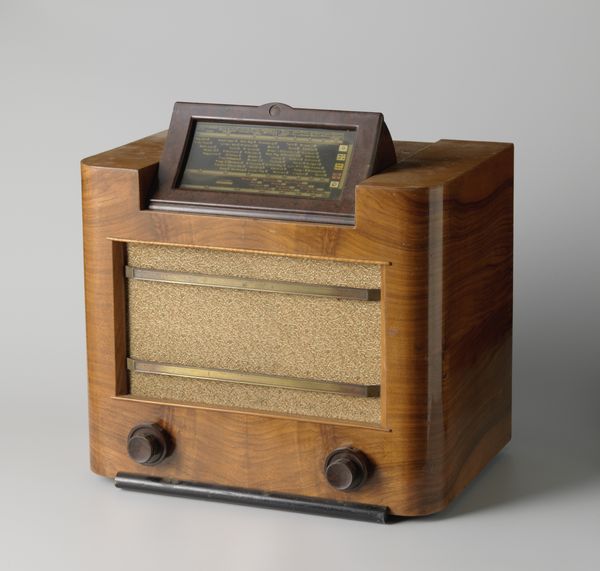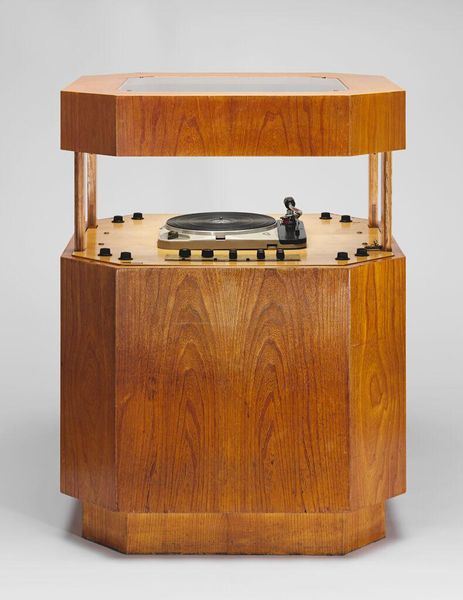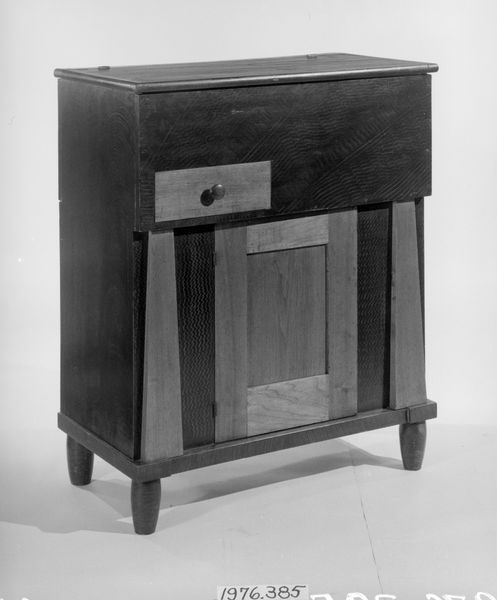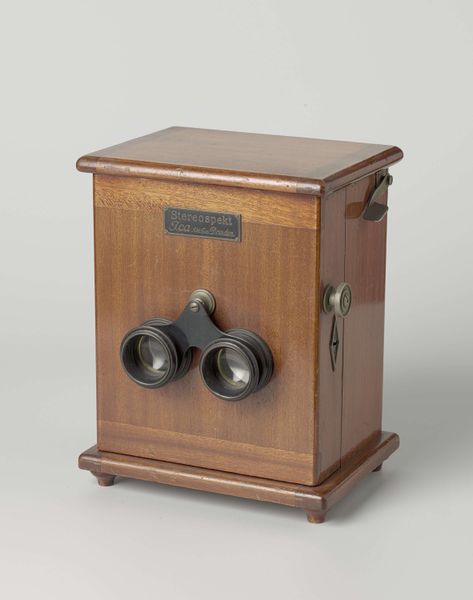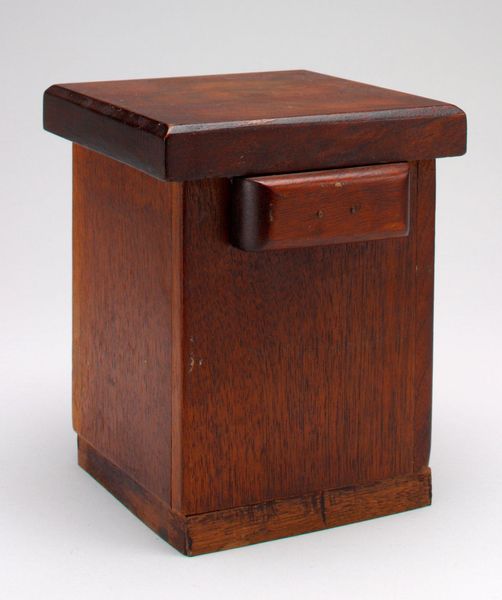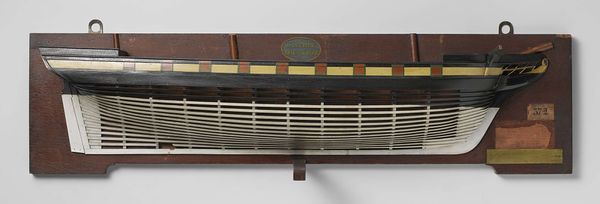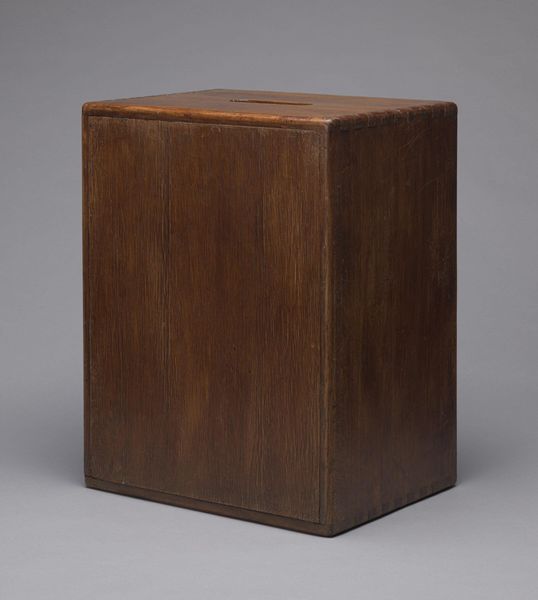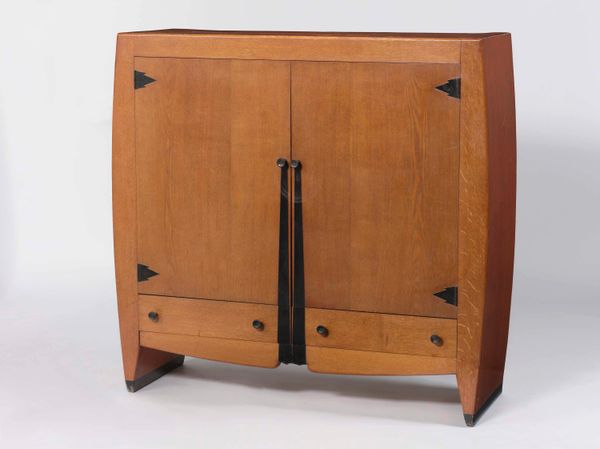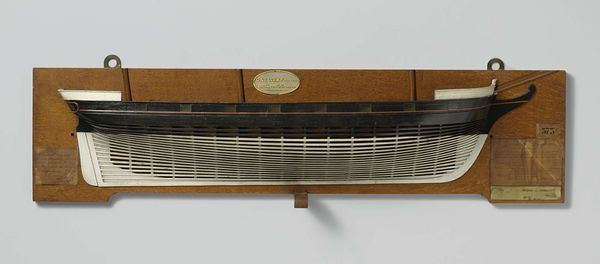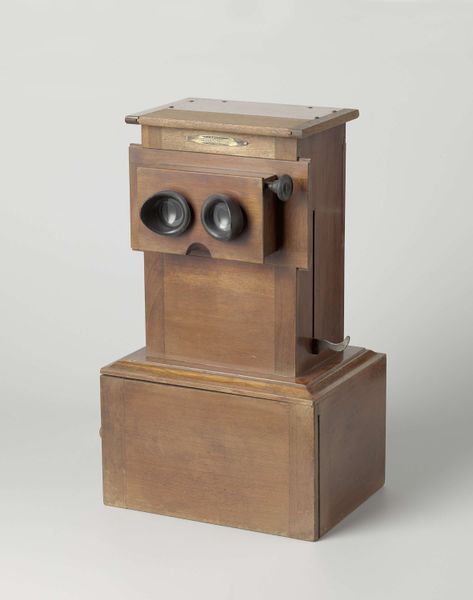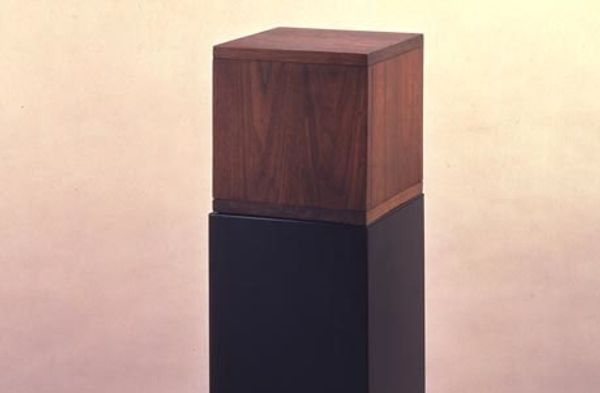
photography
#
photography
#
modernism
Dimensions: 32 x 26 x 9-1/2 in. (81.3 x 66.0 x 24.1 cm)
Copyright: No Known Copyright
Curator: This is a photograph of a Murphy A146CM wireless console radio, made in 1948 by Murphy Radio Ltd. It's currently part of the collection at the Minneapolis Institute of Art. Editor: My first thought is how wonderfully strange and mute it seems. It’s an almost monolith of wood, interrupted only by a circular, woven-like speaker and those two stark tuning knobs up top. It reminds me of some kind of retrofuturist idol. Curator: Its appeal, as with many modernist designs, lies in the interplay of geometric forms. Note the square cabinet softened by subtle, concave curves, juxtaposed with the perfect circle of the speaker grill. This piece also encapsulates the streamlining aesthetic popular during the mid-20th century, seeking a visual harmony with a very practical use. Editor: I'm seeing echoes of the interwar years here, that Bauhaus practicality dressed in a post-war optimism. It looks sturdy, reassuring. Were I alive at the time, I’d imagine its comforting voice a staple in a very modern living room. Almost human, its voice filling your life. It certainly cuts a compelling profile. Curator: Precisely! It speaks of both the formalist reduction inherent in modern design and the socio-cultural role of mass media in the postwar world. You might even see semiotic signals embedded in the material choices. Editor: I wonder about the particular grain of the wood—it has a life of its own that’s totally divorced from the mechanical components it’s been built to house. If one can hear music through a circular scrim, can’t one listen also to the radio’s box? Hear its past and place? It invites such anthropomorphic considerations, no? Curator: I concur that the textural contrast draws attention. And if we consider Walter Benjamin’s writing on aura in a time of mechanical reproduction, then such visual, and potentially haptic, engagements with material are important as aspects of artistic presentation, yes. Editor: Thinking about the wood grain, those little circles like sound waves growing smaller in time— I imagine a quiet living room, full of gentle voices, static-filled, like ghosts in an electrical purgatory. Thank you for prompting these thoughts, its a marvelous work, on many levels. Curator: Thank you. Its functional minimalism is something to truly admire in itself. I too have found a newfound perspective on what design history can bring.
Comments
No comments
Be the first to comment and join the conversation on the ultimate creative platform.
